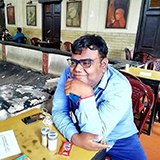A Grandfather’s Pop-Up Books Bring Whimsy and Wonder to the Next Generation – GetBengal story
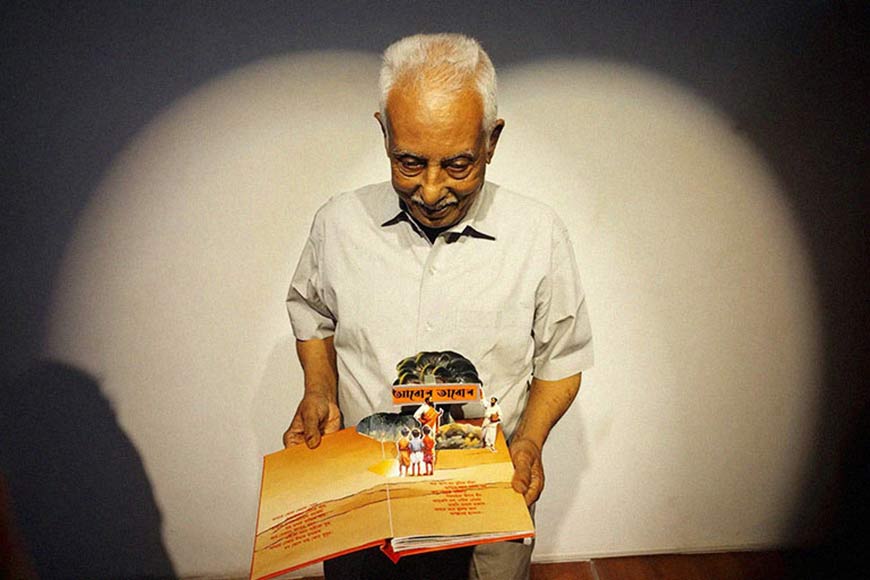
Imagine opening the pages of a book and seeing the strange sight of a 'Hansjaru', a creature that's a mix of a duck and a porcupine, or a ‘Bokochchhop, a mix of heron and tortoise, or a 'Hatimi', a fusion of elephant and whale, popping up and gawking at you. The imaginary world of Pyancha and Pyanchani, an owl couple, and Kumropotash, a huge pumpkin man, come to life in the pages of the book. Katukutu Buro, the man who tickles anyone he encounters with a feather, holds a feather in his hand and extends it to tickle the beholder.
These are all pop-up books. Pop-up books have long been popular with children. Although you might find a lot of English pop-up books available in the market, Bengali pop-up books are rare to find.
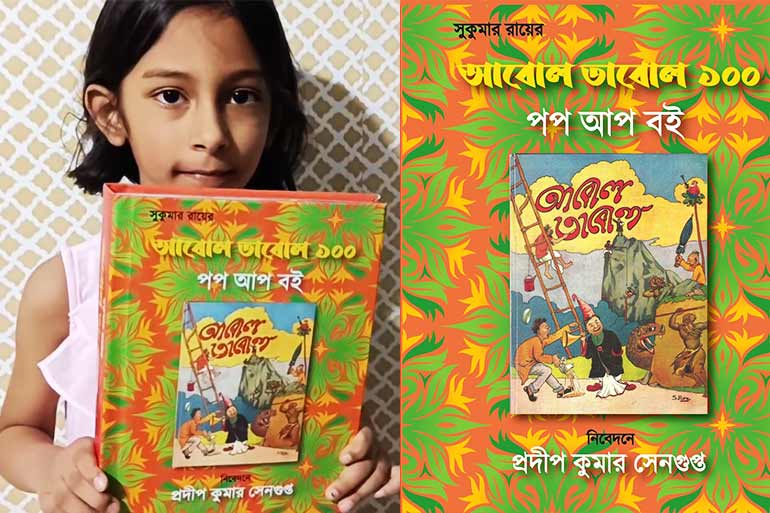
Bengali literature is a treasure trove of children's stories. If pop-up versions of these stories were available, they would attract the young generation to read the folktales and fables of Bengal. They will be able to dream and express themselves coherently in their mother tongue. With this goal in mind, septuagenarian Pradeep Sengupta has devoted his attention and creativity to designing pop-up editions of Bengali children’s literature to introduce his expatriate granddaughter to the phenomenal world of vernacular tales. With the help of such a book, his little granddaughter will be able to immerse herself in the world of these fairy tales. This is what makes playing with the book so exciting and memorable for children. A retired geologist from South Kolkata (originally Jalpaiguri) has taken up the tedious task of paper engineering to make pop-up editions of popular Bengali fables and poems.
Sukumar Ray's most popular work, Abol Tabol (Rhymes of Whimsy), was first published in 1923. To celebrate 100 years of its publication, Sengupta created a pop-up version of Abol Tabol for his little granddaughter in 2023.
Making a pop-up book requires a lot of skill and planning. Once the storyline and illustrations are complete, one needs to decide how many of what kind of movable elements should go into the book. The professional expertise of paper engineers is required to make a successful pop-up book. The engineer must be imaginative but also practical. They seek to make a book that is both entertaining and durable. Paper engineers need to ensure that the pop-up elements do not break over time. Mathematics plays an important role in this phase of making pop-up books. Although modern printing presses can generate all the necessary pieces of pop-up books quickly and efficiently, many pop-up books are still assembled by hand. Sometimes it takes groups as large as 60 people to put together a single book in an assembly line that involves folding, cutting, inserting, connecting, and glueing!
In this case, everything was done single-handedly by Sengupta.
So far, no one has done such extensive and laborious work with pop-up books in Bengali. A documentary showcasing the behind-the-scenes of the making of the book was shot and directed by renowned media teacher and documentary filmmaker Subha Das Molick. The film has already been shown in various educational institutions. Sengupta is an avid reader and writer. His articles are published regularly with illustrations drawn by him. He has always been creative and associated with various innovative projects.
He created the first pop-up book of rhymes for children in 2017. The book ‘Chhorar Chhobi’ was a compilation of six rhymes published by Shishu Sahitya Samsad Private Limited. He chose to work on Abol Tabol to coincide with the centenary of the seminal book of rhymes. He strongly believes Bengali book publishers should now seriously consider exploring the vast world of pop-up books for children. During a tête-à-tête with him, Sengupta said, “There is a vacuum in the segment of pop-up books, and there is a dire need to fill this up. Young children don't read books in Bengali these days. Therefore, parents and guardians who are keen to teach Bengali to their children can take advantage of pop-up books. There is a huge demand for pop-up books abroad as well, among Bengalis scattered in every part of the world. This demand will only increase with time.”
Sengupta sounded optimistic when he reiterated the importance of introducing the beauty of the mother tongue to children with the help of colourful, three-dimensional pop-up books. He said, "My granddaughter had no interest in learning Bengali. She lived in America but has been in India for a while. I wanted her to know the beauty of Bengali. These pop-up books have been instrumental in inspiring her to read more Bengali books. I genuinely believe they have helped her to grasp and enjoy the language.”
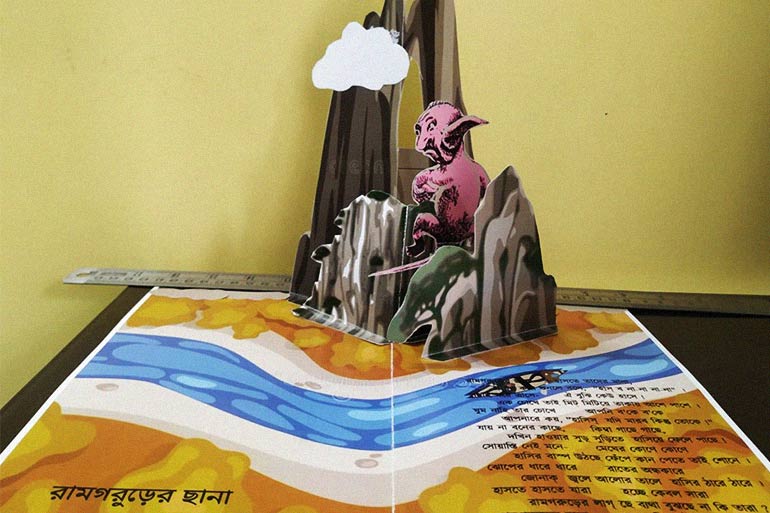
Sengupta has now set his sights on creating a pop-up version of Sukumar Ray's another masterpiece, ‘HaJaBaRaLa.’ An artist is assisting him in this project. He also talked about the problem of creating pop-up books in Bengali. According to him, it is very difficult to find a publisher for such a book. What's more, the infrastructure required to create pop-up books is still not available here. Many people associate them with origami because both involve paper folding. Unlike origami, however, pop-up books rely on scissors and glue. He said, “Printing and cutting pictures can be done here, but assembling is a major obstacle.“ There are no trained people here to do that. Almost all pop-up books in the world are produced in Southeast Asia. Countries like Hong Kong, Malaysia, Singapore, etc. have pop-up book industries where thousands of people are employed. It may be very difficult to create a pop-up industry in Bengal now, but if publishers come forward and invest, pop-up books have a very bright future.”
• Why are Bengali publications not willing to venture into the pop-up book market?
According to Sengupta, “Perhaps Bengali publishers are sceptical and do not have the confidence to take the plunge. The sale of Bengali books had reached rock bottom in the past few years. Only recently, they have picked up sales. Expensive books are also flying off the shelves. It is not possible to keep the price of an ordinary pop-up book under Rs 1000. If you want to improve the quality, prices shoot up to anything between Rs 1,500 and Rs 2,000. In this scenario, few Bengalis will be ready to shell out the money for a children’s book. A majority of urban Bengalis these days are willing to dine out and splurge at fancy restaurants, but will they buy books? There is still scepticism among publishers about this.”
• What is the opinion of Bengali publishers in this regard?
Aritrogopal Majumdar, one of the stakeholders of the century-old publishing house, D.M. Library Publishers and Booksellers, said, “When someone approaches us with the proposal of publishing a pop-up book, our first concern would be where to get the binding done from. Most people are not aware of the technicalities involved in folding the illustrations or binding the book. Lack of trained, skilled, and experienced bindingers is a major factor. Hence, publishers don't want to take the risk. Unwillingness on the part of publishers is the key factor.”
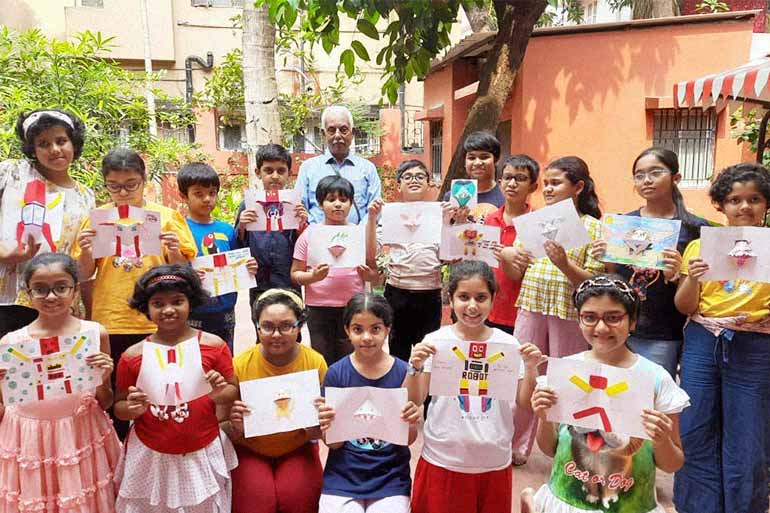
Majumdar also said, “When it comes to printing pop-up books, the first opposition you are bound to encounter is, ‘A multi-coloured book? That will incur a lot of expense’. Needless to say, if the cost of production increases, the price of the book will automatically shoot up. In that case, whatever the price of the book will be, it will be difficult to sell.” In addition, in a majority of cases, the ignorance and resistance of people associated with the current book industry have become an obstacle to the creation of pop-up books in Bengali, opines Aritra. He also shared his memories of pop-up books he read as a child. Those were 'fairy tales' written in English, he reminisces. Incidentally, Aritra's father, Ashishgopal Majumder, the owner of D.M. Library Publisher and Bookseller, pitched in and said he had read several Bengali pop-up books in his childhood.
Everything changes with time. The motto is to move with the times and be relevant. Sengupta is trying his best to popularise pop-up books in Bengali. He has organised pop-up book workshops for both children and adults. A publishing house has expressed interest in publishing pop-up books in Bengali based on indigenous literature. Meanwhile, he is busy planning his next venture. He is all set to create a Bengali pop-up book to promote science with an 'NGO'. Sengupta continues to pave the way for children's literature.






